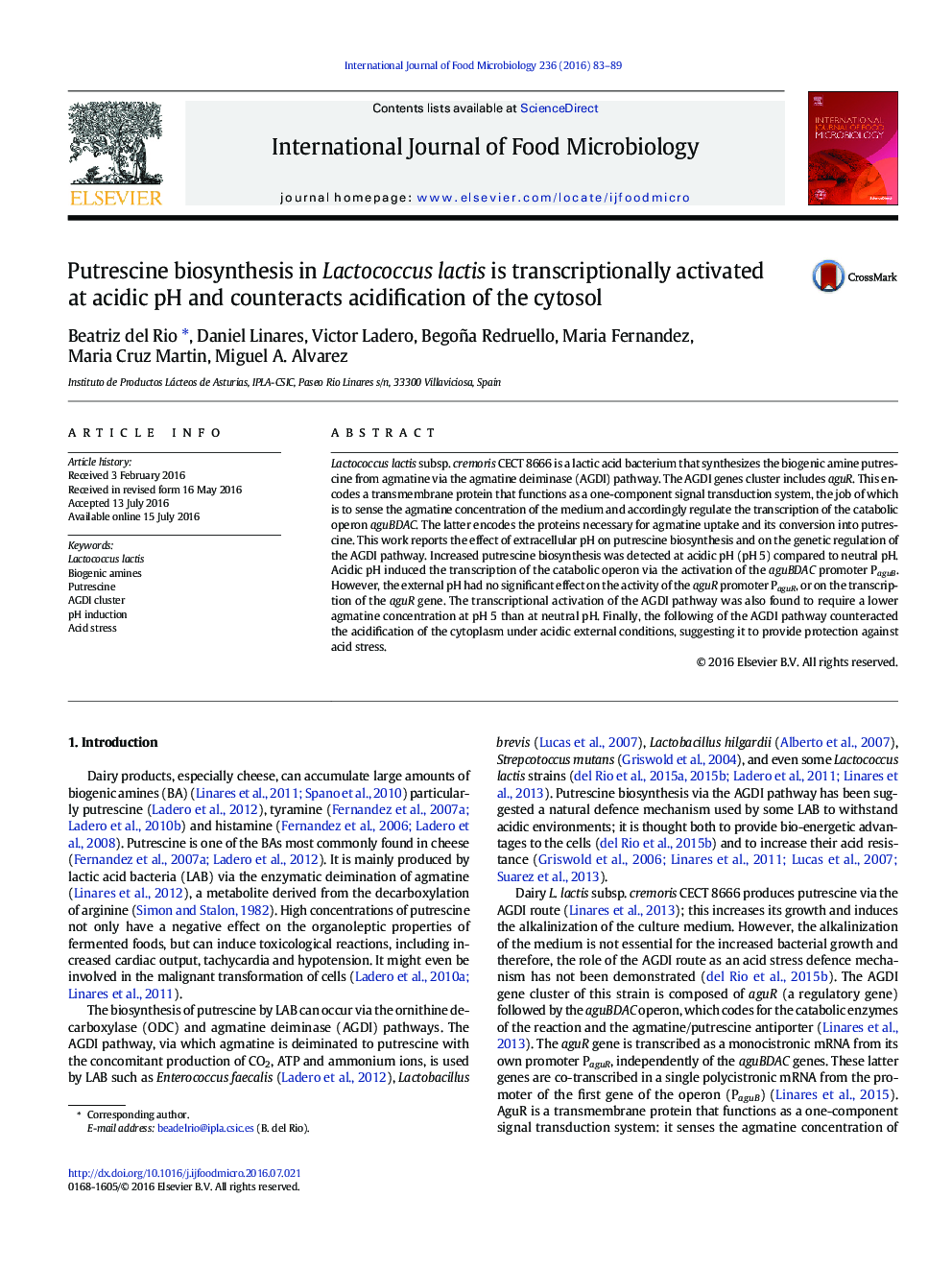| Article ID | Journal | Published Year | Pages | File Type |
|---|---|---|---|---|
| 4366247 | International Journal of Food Microbiology | 2016 | 7 Pages |
•The AGDI putrescine biosynthesis pathway of L. lactis is induced at acidic pH.•Acidic pH activates the transcription of the promoter of the aguBDAC catabolic genes.•pH does not affect the expression of the aguR regulator gene.•Low agmatine concentration is required to activate putrescine biosynthesis at acidic pH.•The AGDI route counteracts the acidification of the cytoplasm in acidic environments.
Lactococcus lactis subsp. cremoris CECT 8666 is a lactic acid bacterium that synthesizes the biogenic amine putrescine from agmatine via the agmatine deiminase (AGDI) pathway. The AGDI genes cluster includes aguR. This encodes a transmembrane protein that functions as a one-component signal transduction system, the job of which is to sense the agmatine concentration of the medium and accordingly regulate the transcription of the catabolic operon aguBDAC. The latter encodes the proteins necessary for agmatine uptake and its conversion into putrescine. This work reports the effect of extracellular pH on putrescine biosynthesis and on the genetic regulation of the AGDI pathway. Increased putrescine biosynthesis was detected at acidic pH (pH 5) compared to neutral pH. Acidic pH induced the transcription of the catabolic operon via the activation of the aguBDAC promoter PaguB. However, the external pH had no significant effect on the activity of the aguR promoter PaguR, or on the transcription of the aguR gene. The transcriptional activation of the AGDI pathway was also found to require a lower agmatine concentration at pH 5 than at neutral pH. Finally, the following of the AGDI pathway counteracted the acidification of the cytoplasm under acidic external conditions, suggesting it to provide protection against acid stress.
